Archdiocese Vienna Created Cardinal 13 March 1933 See Vienna Name Theodor Innitzer Consecration October 16, 1932 | Installed 16 October 1932 Ordination July 25, 1902 Term ended 9 October 1955 Successor Franz Konig Appointed September 19, 1932 | |
 | ||
Other posts Cardinal-Priest of San Crisogono Died December 9, 1955, Vienna, Austria | ||
Cardinal theodor innitzer delivering a speech in vienna in 1933
Theodor Innitzer (25 December 1875 – 9 October 1955) was Archbishop of Vienna and a cardinal in the Latin Rite branch of the Catholic Church.
Contents
- Cardinal theodor innitzer delivering a speech in vienna in 1933
- Cardinal Innitzer spricht zum 250 Jahrestag des Entsatzes von Wien
- Early life
- Ecclesiastical career
- The Anschluss
- Nazi intimidation
- World War II
- Death
- Kardinal Innitzer Prize
- References
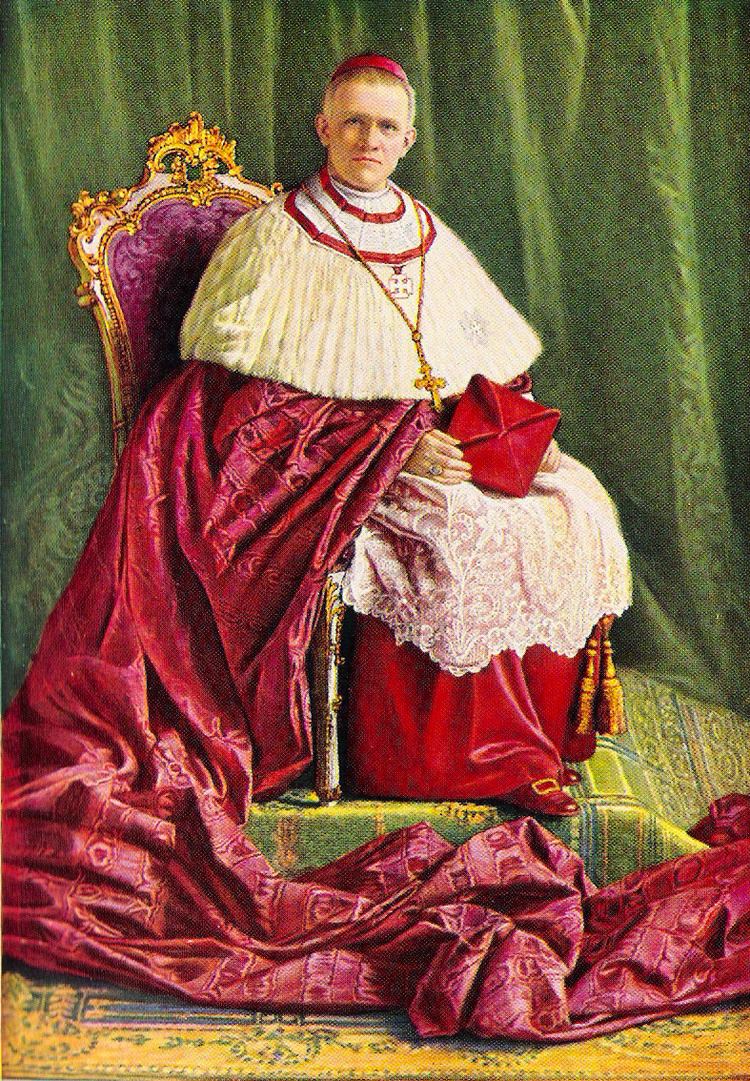
Cardinal Innitzer spricht zum 250 Jahrestag des Entsatzes von Wien
Early life
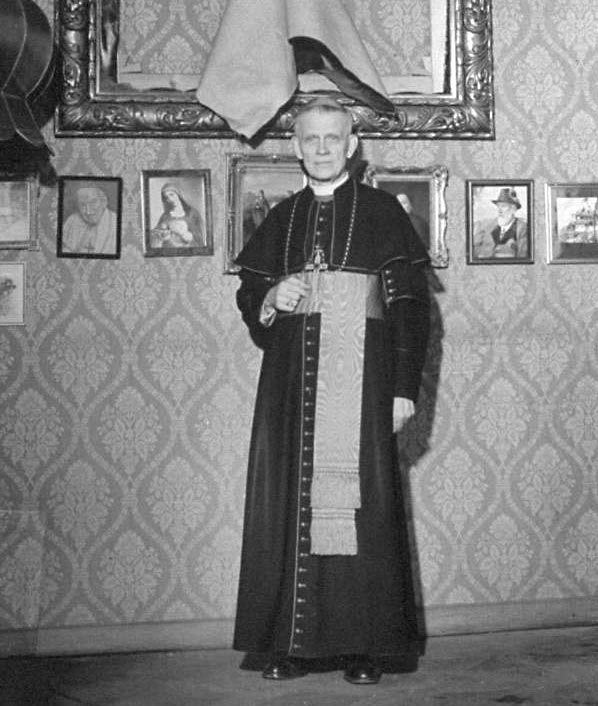
Innitzer was born in Neugeschrei (Nové Zvolání), close to Weipert (Vejprty), Bohemia, Austria-Hungary (today Czech Republic). He was the son of a factory worker and, after completing the minimum mandatory school, became an apprentice in a textile factory. The dean of his home parish supported the young Theodor, which allowed him to attend a gymnasium (1890–1892 Communal-Gymnasium, 1892–1898 Staatsgymnasium in Kaaden.
Ecclesiastical career
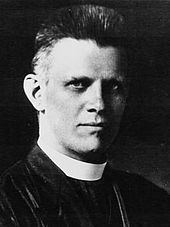
The Anschluss
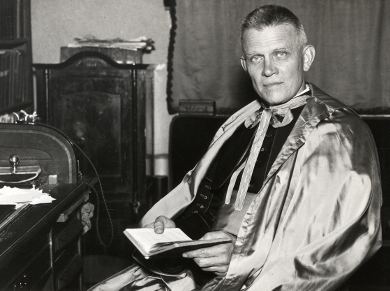
Innitzer's role in early 20th century Austrian history remains disputed, because of his involvement in politics. After initially offering support to the Anschluss, Innitzer became a critic of the Nazis and was subject to violent intimidation from them.
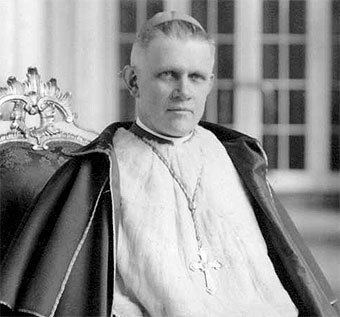
This assessment stems from his cooperation with the Austro-fascist government of Engelbert Dollfuß and Kurt Schuschnigg from 1934 to 1938, which based many of its economic and social policies on the teachings of the Catholic Church. He and the other Austrian Catholic bishops signed a declaration endorsing the Anschluss, set up by Gauleiter Josef Bürckel, and signed by Innitzer with “Heil Hitler!”. Without the bishops' consent the Nazi regime disseminated this statement throughout the German Reich. Upon hearing of this act, Pope Pius XI ordered Cardinal Innitzer to sign a clarification, which was then published in L'Osservatore Romano.
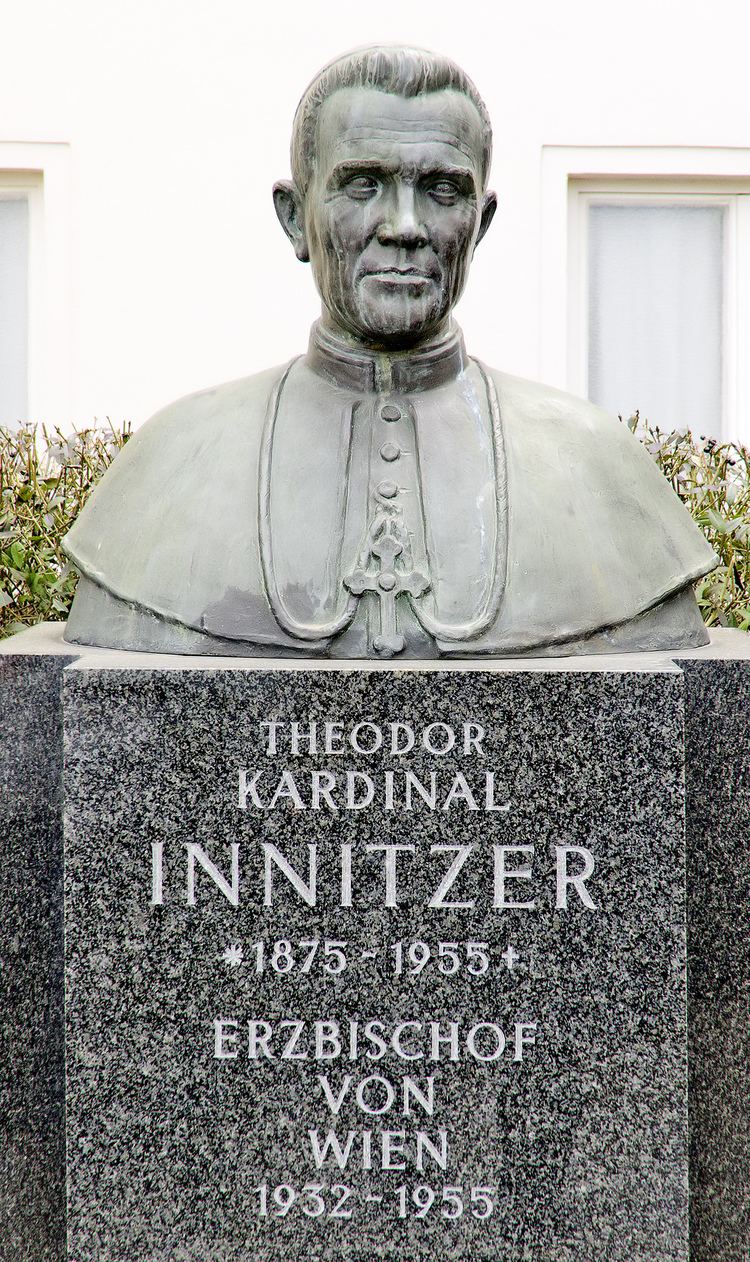
Vatican Radio had recently broadcast a vehement denunciation of the Nazi action, and Cardinal Pacelli (soon to become Pope Pius XII) ordered Innitzer to report to the Vatican. Before meeting with the Pius XI, Innitzer met with Pacelli, who had been outraged by Innitzer's statement. He made it clear that Innitzer needed to retract and was made to sign a new statement, issued on behalf of all the Austrian bishops, which provided: “The solemn declaration of the Austrian bishops... was clearly not intended to be an approval of something that was not and is not compatible with God's law”. The Vatican newspaper also reported that the bishops' earlier statement had been issued without the approval of the Holy See, with the fairly neutral Pope Pius XI disagreeing totally with Innitzer.
In the subsequent months Germany had cancelled the concordat between itself and the Holy See and prohibited Church institutions and Catholic newspapers. In April 1938, in honour of Hitler’s birthday, Cardinal Innitzer had ordered that all Austrian churches fly the swastika flag, ring bells, and pray for Hitler. In October 1938 thousands of Catholic youngsters followed an invitation made by Innitzer to gather in the Cathedral of St. Stephen in Vienna for prayer and meditation. In his sermon Innitzer stated, "There is just one Führer: Jesus Christ". The following day about 100 Nazis, among them many older members of the Hitler Youth, ransacked the archbishop's residence.
Nazi intimidation
Following the Anschluss, the Nazi regime proceeded to repress the Catholic Church - arresting clergy, closing schools and institutions. Innitzer protested, at first privately, and later publicly. In 1938, his residence was ransacked by a Nazi mob. In Britain, the Catholic Herald provided the following contemporary account on 14 October 1938:
The invasion was a reply to a courageous sermon the Cardinal had preached in the Cathedral earlier in the evening, in which the Cardinal told his packed congregation that " in the last few months you have lost everything!' This sermon marked the end of Cardinal Innitzer's attempt to establish a religious peace with the Nazis. The attempt has failed. Cardinal Innitzer is now in line with his German brothers openly urging Catholics to resist anti-Catholic measures. [-] Nazi mobs have penetrated into the Archbishop's Palace on St. Stephen's Square in Vienna and have demolished part of the furniture. Other furniture, as well as files and documents were thrown through the windows and set on fire. Hostile cries like " down with the clergy," " send the Cardinal into a concentration camp," " traitor bishop " and so on were heard.
World War II
Innitzer's ambiguous relationship with the Nazi regime brought him a lot of criticism after World War II (he was referred to as the "Heil Hitler Cardinal"). During the War Innitzer was critical of the anti-Semitic and racist policies of the Nazis towards the Austrian Jews and also the Catholic gypsies of the Austrian countryside.
He openly, though moderately, supported the war effort against the Soviet Union, however. Years before, he had campaigned against Soviet policies. In 1933, based on data collected by undercover investigation and photographs, Innitzer sought to raise awareness in the West of the many deaths by hunger and even cases of cannibalism that were occurring in Ukraine and the North Caucasus at that time.
Death
Theodor, Cardinal Innitzer died in Vienna, Austria on 9 October 1955.
Kardinal Innitzer Prize
The Archdiocese of Vienna annually awards the Kardinal-Innitzer-Preis to scientists and scholars, which is named in honor of Innitzer.
